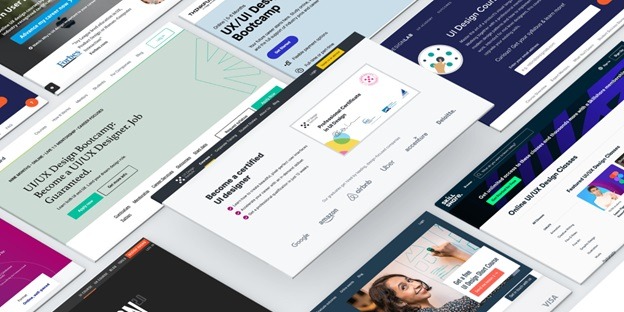As a business owner, it is important to understand the difference between UI and UX designers in order to make the most informed decision for your company. UI designers, or user interface designers, are responsible for the overall look and feel of the product. They create the visual design, including layout, typography, colors, and icons. UX designers, or user experience designers, focus on how the product works and how users interact with it. They analyze user behavior and design solutions that improve the overall experience. By understanding the different roles of UI and UX designers, you can ensure that your team has the skills and expertise necessary to create a successful product.
UI designer, UX designer, and the user
In any discussion of digital design, it is important to understand the distinction between UI and UX designers. UI designers are responsible for the look and feel of a website or app, while UX designers focus on the user experience, making sure that the interface is easy to use and navigate. Both roles are essential to the success of a digital product, but it is important to understand the different strengths and skills that each brings to the table.
UI designers typically have a strong background in graphic design, and they use this knowledge to create visually appealing interfaces that users will enjoy using. They need to have an eye for detail and be able to create visual designs that are both consistent with the brand identity of a product and easy for users to understand. In addition, UI designers need to be able to work closely with developers to ensure that their designs are achievable and meet technical requirements.
UX designers, on the other hand, tend to have a more research-focused background. They use their skills in user research and analysis to understand the needs of users and design interfaces that meet those needs. They need to be able to think creatively about how users interact with digital products and solve problems that may arise during use. In addition, UX designers need strong communication skills so that they can effectively convey their ideas to stakeholders.
Both UI and UX designers play key roles in the success of digital products, but it is important to understand the different skills and strengths that each brings to the table. By understanding the role of each type of designer, you can make sure that your team has the necessary skills and expertise to create a successful product.
UI designers’ and UX designers’ job responsibilities
While UI designers’ and UX designers’ job responsibilities may overlap, there are also some key differences between the two roles. As a UI designer, you’ll be responsible for creating high-quality visual designs, ensuring that the user interface is intuitive and easy to use. In contrast, a UX designer’s primary focus is on the user experience. This includes researching user needs and pain points as well as designing navigation flows and creating prototypes. While UI designers need to have a strong understanding of visual design principles, UX designers must also be able to think analytically and solve problems creatively. Ultimately, both UI designers and UX designers play vital roles in ensuring that users have a positive experience with a product.
As a UI designer, you may be under the impression that your job is to create beautiful designs. However, your job is actually to create designs that are effective and useful for the user. This means that you need to understand not only how to design interfaces but also how to design experiences. You also need to have a strong understanding of user psychology and behavior in order to create designs that meet users’ needs. This is why it is said that the responsibilities of UI and UX may overlap. There is a strong connection between understanding design elements and page components and how users interact with them. For example, let’s take a form element: while the UI designer might be solving things such as what font, color, positioning etc will work best for the element considering standards, conventions, and patterns, the UX designer is likely to solve the task of how to design particular element in order to make a user feel entertained while completing the user task or making sure it is easy to stick with the completing the form and nothing is confusing for the user.
UX designers are responsible for understanding users and their needs and then designing solutions that meet those needs. They do this by performing research, interviewing users, and observing them in their natural environment. They then use this information to create wireframes, prototypes, and final designs. UX designers typically have a strong background in human-computer interaction (HCI) as well as experience in graphic design, web development, and software development.
UI designer and UX designer skill set and education
UI designers usually have a background in graphic design, but they also need to be well-versed in user experience principles. In addition, they should have a good understanding of how people use digital products and what motivates them. As user habits and technologies change, UI designers need to be able to adapt their designs accordingly. While formal education is not required to become a UI designer, many companies prefer to hire candidates who have a bachelor’s degree in graphic design or a related field.
A good UX designer must have a strong understanding of user needs and behaviors, as well as the ability to create prototypes and user flows. In addition, UX designers need to be proficient in wireframing and user testing. While there are many ways to become a UX designer, most professionals have a bachelor’s degree in design, human-computer interaction, or a related field. Additionally, many UX designers have several years of professional experience in graphic or web design, user research, or product development. As user experience becomes increasingly important in the business world, the demand for qualified UX designers is likely to continue to grow.
Salary expectations for UI and UX designers
When it comes to setting salary expectations, UI and UX designers need to be aware of the market rates for their skillset. In order to get an idea of what you could be earning, research similar roles in your area and take into account any relevant experience or qualifications you may have. It’s also important to be realistic in your expectations; remember that employers will be looking at a range of factors when deciding how much to pay you, and your salary will need to reflect this. With this in mind, it’s essential to have a clear understanding of your worth before entering into negotiations with potential employers. By being informed and realistic about your salary expectations, you can ensure that you are paid fairly for your talents as a UI or UX designer.
To talk numbers, salary expectations for UI designers vary depending on experience and skill set but tend to be lower than those of UX designers. A junior UI designer with 1-3 years of experience can expect a salary range of $40K-$60K per year while a senior UI designer with 5-10 years of experience can expect a salary range of $70K-$90K per year.
Conclusion
UI and UX designers have different skill sets, and their salaries reflect this. UI designers usually have a background in graphic design, while UX designers need to understand user needs and behaviors in order to create prototypes and user flows. Additionally, UX designers typically have several years of professional experience in graphic or web design, user research, or product development. As user experience becomes increasingly important in the business world, the demand for qualified UX designers is likely to continue to grow.


